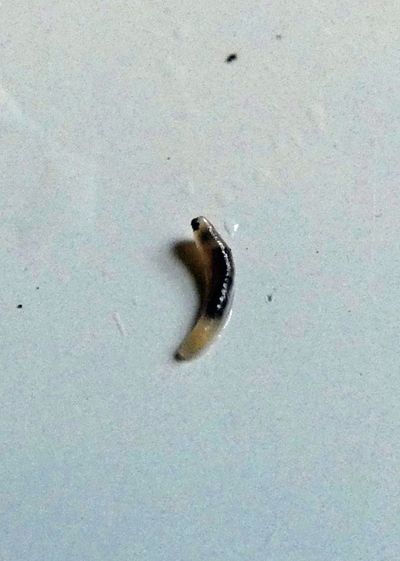These are fruit fly larvae (offspring of flies). If you want to learn how to prevent fruit maggots, you’ve come to the right place. Keep reading for fruit maggot info and learn how to prevent that “ugh” when you bite into fresh fruit.
Where Do Fruit Maggots Come from?
There are several species of fruit flies that lay their eggs in the fruit. The two most commonly found in home gardens are apple maggots and cherry fruit fly maggots. Apple maggots are the progeny of a fly that is a bit smaller than the common housefly. Adults are black with yellow legs, crisscrossed bands across their wings, and a yellow striped abdomen. They lay eggs in the skin of not only apples but blueberries, cherries, pears, and plums as well. The resulting fruit fly larvae are white to yellowish and about ¼ inch (0.5 cm.). Since they are so small, they often go undetected until the fruit is bitten into… yuck. Cool springs foster conditions favorable to maggots in fruit. Cherry fruit flies look like small common flies with barred wings. Their young are yellowish-white, with two dark mouth hooks but no legs. They feed on not only cherries but pear and peach trees as well, leaving the fruit undersized and distorted. Affected cherries will sometimes drop prematurely wherein the maggots can be found feeding on the rotten pulp.
How to Prevent Fruit Maggots
There is no complete method of control for maggots already inside fruit. The fruit fly larvae are in there happily munching away and growing until they are ready to drop to the ground and pupate. You can try to remove infested fruit from the area to reduce the number of flies the successive summer, but this isn’t a cure-all for the current problem of maggots in fruit. The best method is to prevent adult flies from getting to the fruit and laying eggs. Commercial sticky traps or homemade vinegar traps will work to trap adult flies. On average you need to hang four to five per tree. To make a homemade vinegar trap, round up some small recycled plastic containers. Drill small holes in the top of the container. A couple of holes to run wire through to hang the contraption and additional holes the fruit flies can crawl into. Fill the bottom of the homemade trap with apple cider vinegar and a couple of drops of dish soap. Hang the traps before the fruit is changing color. Remove both the homemade vinegar trap and commercial sticky traps from the tree after three to four weeks to avoid killing beneficial insects. Keep an eye on the traps. When you see evidence of fruit flies, apply spinosad or a neem product. Another option is to spray the tree with fungicide. There are a number of options available. An organic option is using a fungicide just as fruit is ripening that is composed of hydrogen peroxide and peracetic acid. Lastly, kill overwintering pupae by cultivating the top two inches (5 cm.) of soil beneath fruit trees in the late fall. This will expose the pests to predators and the cold.
